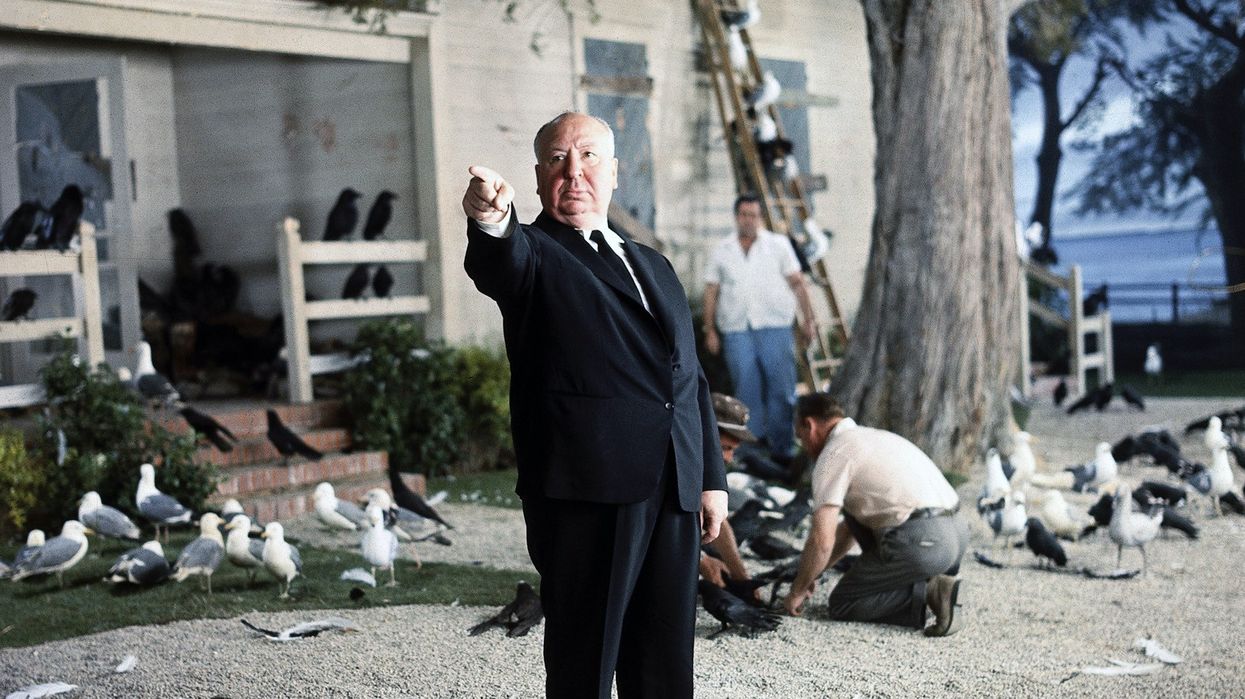How Alfred Hitchcock Used Visionary Cinematic Language to Tell His Stories
Alfred Hitchcock's visual language is what earned him the moniker of the Master of Suspense.

I saw North by Northwest when I was a kid, and I remember the excitement of not knowing what was around every bend. The idea that the most extraordinary things can happen to ordinary people is the drive behind why I started writing.
But there's so much more to Hitchcock than just storytelling. There's an entire visual language he introduced to help those stories resonate with the audience.
Check out this video essay from The Discarded Image, and let's talk more after the jump.
How Alfred Hitchcock Used Visionary Cinematic Language to Tell His Stories
One of the things I feel like we don't talk enough about is how Hitchcock developed an auteur language that never really changed from the early 1930s until the 1970s. His auteur touch would expand and mirror itself from movie to movie, but he always was working with significant tools to capture the audience's attention.
For this reason, many see Hitchcock as arguably the most important pioneer of the cinematic language.
The video above analyzed films such as Psycho, The Birds, Rear Window, North By Northwest, Notorious, Topaz, The Man Who Knew Too Much, and Shadow of a Doubt to make the point, but I wanted to look at a few highlights.
These are the things we call "Hitchcockian" now. Things like his focus on his characters' eyes, editing techniques, like the ones he used in Rope, and even having surprising things happen in unexpected locations, like that crop duster scene in North By Northwest.
The POV shot is one of Hitchcock's staples, and he uses it all the time to mesh the character with the audience, putting us on edge to see what's going to happen next. It's a really smart way to align our fate with the fate of the character onscreen.
Hitchcock often frames the protagonist and antagonist in the same way, mirroring them for the audience, but uses lighting to show what's different about them as characters. In other words, he uses lighting to help the viewer determine who's bad and who's good.
Furthermore, his thoughtful use of long shots and close-ups convey plot and emotion visually. We can tell who is lying, who is telling the truth, and what makes them nervous. Also, the pans from a closeup to a wide shot are so masterful.
Lastly, he uses overhead shots to pull out of scenes...like... a lot. There's obviously the famous one from Psycho, but across Vertigo and Shadow of a Doubt we seem to always go from the pull-back shot to an overhead. It's really special.
This pan and zoom out from Young & Innocent tell us that the two characters are searching for a man with a twitch in the eye—a small detail Hitchcock loved to use to get the audience involved in the search. Hitchcock decides to show us the location of the man via an elaborate and lengthy crane shot, swooping over the reception, the restaurant, and right up to the drummer's face where the twitch is clearly shown.
What did you learn from the video?
Let us know in the comments.
Up Next: Learn 50+ Camera Angles, Shots, and Movements: A Complete Guide
Have you ever been overwhelmed at the possibility of every camera angle, framing, and shot type available as a filmmaker? Us too. So we provided a cheat sheet with definitions for you!
Keep reading.
Source: The Discarded Image











